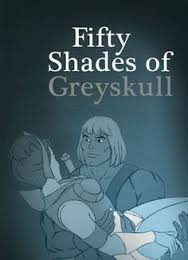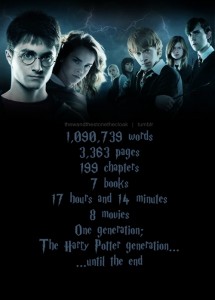 I’ve often commented that Fifty Shades of Grey’s success stemmed from the simple fact that e-readers were prevalent and the time was right for anonymously reading sultry fiction. I certainly can’t count it as riveting literature in the same category as Lolita, though I’m sure author E.L. James has less concerns over literary merit than sales. Fifty Shades serves as an ideal tale of marketing, right-place-right-time, and tenacity.
I’ve often commented that Fifty Shades of Grey’s success stemmed from the simple fact that e-readers were prevalent and the time was right for anonymously reading sultry fiction. I certainly can’t count it as riveting literature in the same category as Lolita, though I’m sure author E.L. James has less concerns over literary merit than sales. Fifty Shades serves as an ideal tale of marketing, right-place-right-time, and tenacity.
From a timing perspective, the world was ready for good erotic fiction, and though I’m not an advocate for her writing style, James has an avid fan base. In a recent interview with Time, James commented on her Executive Producer credit, and her stewardship of the Fifty Shades transition to the big screen. Her passion for her work shines through, and it’s clear she has a vision that she’s following through with. Few first time authors can say the same.
 Set the clock back to the late 90’s, just as reading programs were transitioning from the classroom to the real world. Along came J.K. Rowling with Potter, which was anything but an overnight success. Harry Potter captivated an entire generation in a way fiction rarely has, and became an accessible story that bridged the gap between generations. Parents could read with their children and take comfort in the fact that kids were reading something not only popular, but something with artistic value and real life lessons. The Potter series was as much about the characters as it was about growing up and coming of age. Kids that grew up reading Potter were ready for something more, and along came Twilight. More a sordid and unrefined tale of teenage angst than a literary work extolling sensuality and first love, Twilight captured the Potter audience right at puberty. Stephen King once famously said, “Harry Potter is about confronting fears, finding inner strength, and doing what is right in the face of adversity. Twilight is about how important it is to have a boyfriend.” King’s insight stems from the fact that readers wanted something the fiction world wasn’t giving them. Along came Meyers with her tale of stalker vampires in desperate need of a restraining order.
Set the clock back to the late 90’s, just as reading programs were transitioning from the classroom to the real world. Along came J.K. Rowling with Potter, which was anything but an overnight success. Harry Potter captivated an entire generation in a way fiction rarely has, and became an accessible story that bridged the gap between generations. Parents could read with their children and take comfort in the fact that kids were reading something not only popular, but something with artistic value and real life lessons. The Potter series was as much about the characters as it was about growing up and coming of age. Kids that grew up reading Potter were ready for something more, and along came Twilight. More a sordid and unrefined tale of teenage angst than a literary work extolling sensuality and first love, Twilight captured the Potter audience right at puberty. Stephen King once famously said, “Harry Potter is about confronting fears, finding inner strength, and doing what is right in the face of adversity. Twilight is about how important it is to have a boyfriend.” King’s insight stems from the fact that readers wanted something the fiction world wasn’t giving them. Along came Meyers with her tale of stalker vampires in desperate need of a restraining order.
Later novels like Divergent, Hunger Games, and Maze Runner hit on the same themes Twilight touched – late teenage angst, coming of age and sexual discovery, and the transition into adulthood often with the hero protagonist cast as someone very young who is chosen, someone who knows the world of adults isn’t working and needs to change. The market is thriving for this kind of fiction. Early twenty-something readers are thirsty for something to captivate them, and given that most of the generation cut their teeth on Potter, it’s no wonder there are so many dystopian, magical, and overtly sexual stories on the market.
At a conference recently, someone asked a panel of agents and editors how much the success of Fifty Shades and Hunger Games affect fiction sales, and if it’s best for a first-time author to maneuver her novel into a dystopian and/or sexual masterpiece. Every agent, without fault, said no. If your novel already fits to a theme, then go with it. Re-working a theme into your novel, however, isn’t something that works well, if ever.
Stay true to yourself, and true to your story. If you can’t give an elevator pitch and categorize your story, or if you find yourself saying it’s uncategorizeable, that’s a pretty telling sign that you have no idea what you’re writing about. If you don’t know, how can your reader? If you write well, write what you believe, and your story is strong, you’ll find readers without resorting to gimmicks or trying to write what’s popular. Writing to a market is likely a recipe for disaster.